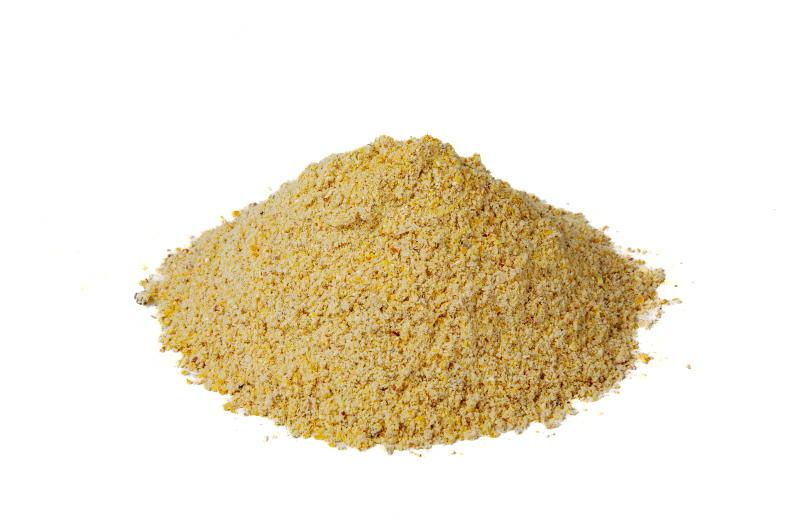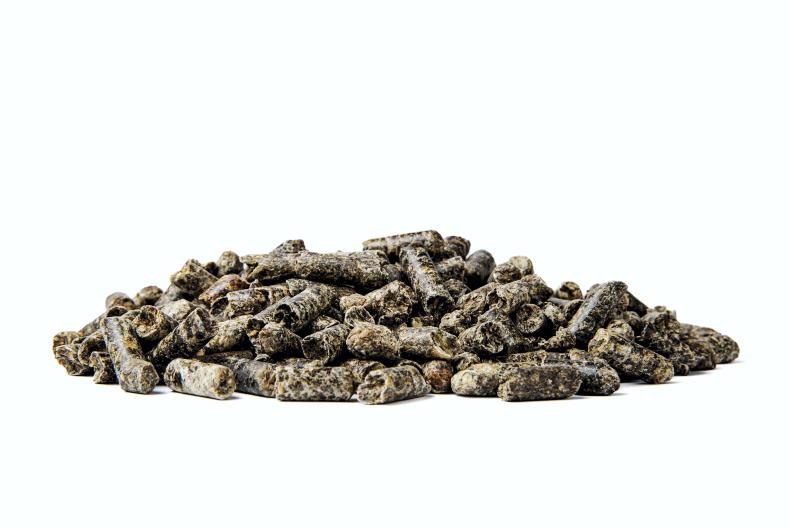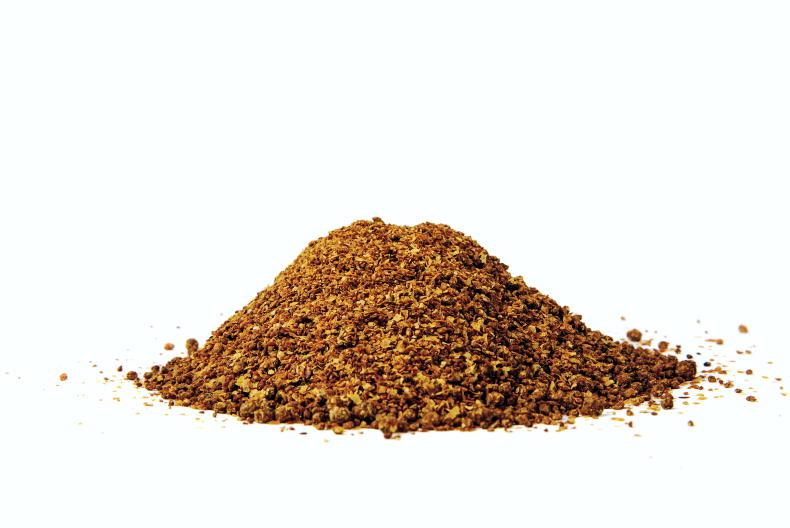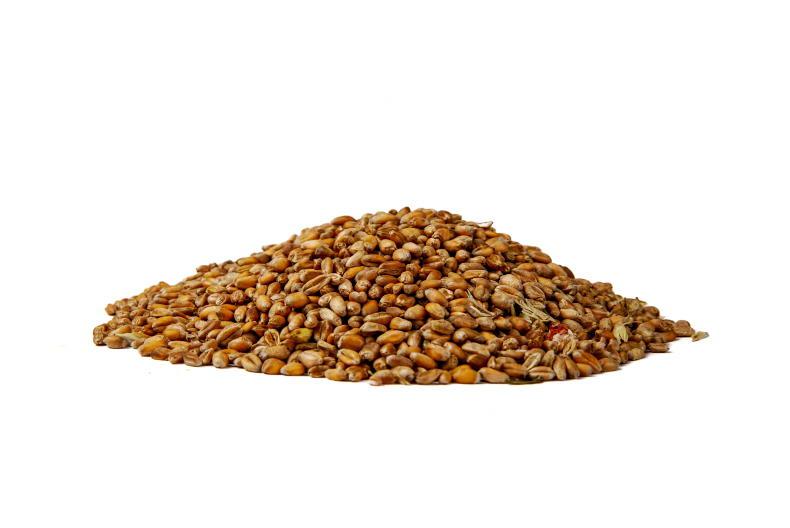With millions of tonnes of rations being purchased by farmers over the next few months, this week we take a look at ration ingredients and what farmers should be looking for when they are purchasing rations over the next few months.
Good-quality ingredients, along with adequate feeding levels, are important for animals to meet target liveweight gains. Meal companies aren’t required by law to list the percentage inclusion of ingredients in rations and instead ingredients are listed on the label in descending order.
Many mills will happily provide the percentage inclusion rates for their rations, while others cite commercial sensitivity when it comes to providing the detail of what is included in rations.
The ingredients you should look for in ration depends on the type of stock you are feeding. Good energy sources include cereals such as barley, wheat and maize and they should be at the top of any ration. Ingredients like beet pulp and soya hulls aren’t as good for energy, but do provide a good fibre source which is important in a balanced ration.
The protein source is the final part of the jigsaw and soya bean meal is the best quality protein for inclusion in rations and the highest in terms of digestibility.
Other good protein sources include maize distillers and rapeseed meal.
Key issues when buying ration
When buying a ration, look for the overall nutrient content, ie UFL/kg, protein, minerals and fibre of your ration/meal. A high energy meal/ration should be 0.94UFL/kg as fed.
Grass is a good source of protein and so low protein, high energy rations should be fed to stock at grass.
The level of protein needed depends on stock being fed, eg young stock will require higher protein in their diet to grow frame.
A cheaper ration/meal may not be better value than a more expensive ration if poorer quality ingredients are used.

Maize meal (UFL: 1.05): very high energy, low protein feed. High starch, but slower to be digested than barley or wheat; 10% protein and 3% fibre.

Beet pulp (UFL: 1.00): high energy, high fibre feed. By-product of sugar extraction from beet; 10% protein and 20% fibre.

Rapeseed meal (UFL: 0.9): medium energy, high protein feed. Poorer quality protein relative to soya. By-product of rapeseed oil extraction; 39% protein and 13.5% fibre.

Corn gluten (UFL: 0.89): moderate energy, moderate protein feed. By-product of maize processing into bioethanol; 24% protein and 9% fibre.

Soya bean meal (UFL: 1.00): high energy, high protein feed. Excellent quality protein. By-product of soya oil extraction; 48% protein and 5% fibre.

Maize distillers (UFL: 1.00): high energy, high protein feed. By-product of maize processing into bioethanol; 30% protein and 10% fibre. Good alternative protein source to soya.

Wheat (UFL: 1.00): high energy, low protein feed. High in starch and higher risk of acidosis than barley, as more rapidly digested; 11% protein and 3% fibre.

Palm kernel (UFL: 0.85): low to medium energy and medium protein; 16% protein and 24% fibre. Can be fed ad-lib as fodder stretcher, as cows will self-regulate intake.

Barley (UFL: 1.00): a high energy, low protein feed. High in starch, with caution required at high feeding levels due to acidosis risk; 11% protein and 5% fibre.

Sunflower nuts (UFL: 0.68): a low energy, high protein feed, but the protein is poor quality. By-product of sunflower oil extraction; 34% protein and 26% fibre.

Wheat distillers (UFL: 0.76): moderate in fibre and high in protein. Upper inclusion rate of 30% in beef rations.

Soya hulls (UFL: 0.88): medium energy, high fibre feed. Good ‘filler’ option. Ideal supplement at grass. By-product of the de-hulling of soya beans; 12% protein and 40% fibre.
With millions of tonnes of rations being purchased by farmers over the next few months, this week we take a look at ration ingredients and what farmers should be looking for when they are purchasing rations over the next few months.
Good-quality ingredients, along with adequate feeding levels, are important for animals to meet target liveweight gains. Meal companies aren’t required by law to list the percentage inclusion of ingredients in rations and instead ingredients are listed on the label in descending order.
Many mills will happily provide the percentage inclusion rates for their rations, while others cite commercial sensitivity when it comes to providing the detail of what is included in rations.
The ingredients you should look for in ration depends on the type of stock you are feeding. Good energy sources include cereals such as barley, wheat and maize and they should be at the top of any ration. Ingredients like beet pulp and soya hulls aren’t as good for energy, but do provide a good fibre source which is important in a balanced ration.
The protein source is the final part of the jigsaw and soya bean meal is the best quality protein for inclusion in rations and the highest in terms of digestibility.
Other good protein sources include maize distillers and rapeseed meal.
Key issues when buying ration
When buying a ration, look for the overall nutrient content, ie UFL/kg, protein, minerals and fibre of your ration/meal. A high energy meal/ration should be 0.94UFL/kg as fed.
Grass is a good source of protein and so low protein, high energy rations should be fed to stock at grass.
The level of protein needed depends on stock being fed, eg young stock will require higher protein in their diet to grow frame.
A cheaper ration/meal may not be better value than a more expensive ration if poorer quality ingredients are used.

Maize meal (UFL: 1.05): very high energy, low protein feed. High starch, but slower to be digested than barley or wheat; 10% protein and 3% fibre.

Beet pulp (UFL: 1.00): high energy, high fibre feed. By-product of sugar extraction from beet; 10% protein and 20% fibre.

Rapeseed meal (UFL: 0.9): medium energy, high protein feed. Poorer quality protein relative to soya. By-product of rapeseed oil extraction; 39% protein and 13.5% fibre.

Corn gluten (UFL: 0.89): moderate energy, moderate protein feed. By-product of maize processing into bioethanol; 24% protein and 9% fibre.

Soya bean meal (UFL: 1.00): high energy, high protein feed. Excellent quality protein. By-product of soya oil extraction; 48% protein and 5% fibre.

Maize distillers (UFL: 1.00): high energy, high protein feed. By-product of maize processing into bioethanol; 30% protein and 10% fibre. Good alternative protein source to soya.

Wheat (UFL: 1.00): high energy, low protein feed. High in starch and higher risk of acidosis than barley, as more rapidly digested; 11% protein and 3% fibre.

Palm kernel (UFL: 0.85): low to medium energy and medium protein; 16% protein and 24% fibre. Can be fed ad-lib as fodder stretcher, as cows will self-regulate intake.

Barley (UFL: 1.00): a high energy, low protein feed. High in starch, with caution required at high feeding levels due to acidosis risk; 11% protein and 5% fibre.

Sunflower nuts (UFL: 0.68): a low energy, high protein feed, but the protein is poor quality. By-product of sunflower oil extraction; 34% protein and 26% fibre.

Wheat distillers (UFL: 0.76): moderate in fibre and high in protein. Upper inclusion rate of 30% in beef rations.

Soya hulls (UFL: 0.88): medium energy, high fibre feed. Good ‘filler’ option. Ideal supplement at grass. By-product of the de-hulling of soya beans; 12% protein and 40% fibre.


















 This is a subscriber-only article
This is a subscriber-only article










SHARING OPTIONS: